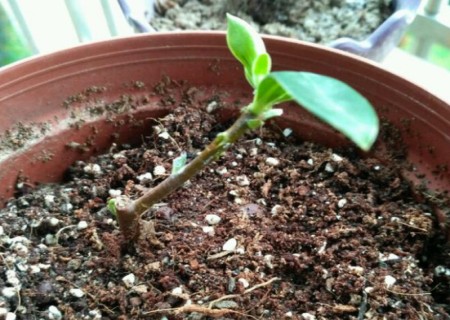How high is the survival rate?
Daphne odora, especially Daphne phnom penh, its flowers are beautiful and fragrant, and many pot friends regard it as the preferred flower variety for family potted plants. Daphne odora is propagated by cuttings, which are divided into old branch cuttings and young branch cuttings. So, how does daphne cutting survival rate high? In this respect, the use of softwood cuttings has obvious advantages. Because it is not easy to root with old cuttings, natural survival will be more difficult than softwood cuttings.

In order to improve the survival rate of Daphne odora cuttings from the source, Xiaobian will talk about the softwood cuttage technology of Daphne odora today, hoping to help everyone improve the cuttage of Daphne odora. But if you have a different opinion, please leave a comment below and talk about your understanding.
1. Cutting and cutting
The cuttings of Daphne odora should be cut in June and July in summer, and those branches with good development, strong growth, no pests and full buds should be selected as cuttings.
2. Cutting treatment
The treatment ventilation of Daphne odora cuttings is usually cut from top to bottom, the cutting effect of middle and upper part is the best, and the cutting effect of top part is the worst. The cuttings taken from young shoots are generally cut 10-12 cm. It is only necessary to keep the upper 2-3 leaves, and the lower leaves should be removed. At the same time, it is necessary to cut off half of each of the 2-3 leaves, which can reduce the evaporation of water from the leaves. After cutting, put the branches into sugar solution for about 10 days, and then take them out for cutting.
3. Cutting process
Cutting substrate should use fine sand or vermiculite with good air permeability and water fixation; before cutting, cut the base of cuttings in half, about 1.5-2 cm deep, insert a small stone to avoid two sides closing, so that the base of cuttings can fully contact with the substrate, which is more conducive to the germination of roots; cutting, from the base to insert a third of the cuttings into the substrate, and then compact the soil around the cuttings to stabilize the cuttings.
4. Cutting management
After the branches are inserted, the next thing to do is to maintain and manage them. As long as the maintenance and management are in place, they can take root after 1 month. One of the most important is to keep the soil moist, so it should be replenished in time to provide the necessary moisture for rooting and sprouting. It is recommended to keep the temperature at 20-25℃.
In the seedling stage of the plant, it is recommended to spray clean water, and it is appropriate to gradually penetrate the substrate with water. It is not allowed to irrigate with unclean water. At the same time, it is necessary to avoid strong light exposure, especially in summer. Because the fleshy root system of Daphne odora has certain aroma, earthworms and ants should be avoided at ordinary times, otherwise it is easy to cause plant death.
Time: 2019-06-08 Click:
- Prev

Illustration of how Ruixiang cuttings
Daphne mostly propagates by cutting and high pressure, in which cutting is the most important way of propagation, which can be carried out in spring, summer and autumn. The cutting should be carried out from February to March in spring, from June to 7 in summer and from August to September in autumn. But no matter what season the cuttings are,
- Next

The method of fig cuttage propagation-hardwood cuttage
Figs grow luxuriantly, have large leaves and beautiful trees, and are highly ornamental, so they are often used for garden planting and family pot planting. Figs can be propagated in a variety of ways, including cutting, ramet, striping and so on. In contrast, cutting is the most convenient way to propagate.
Related
- Fuxing push coffee new agricultural production and marketing class: lack of small-scale processing plants
- Jujube rice field leisure farm deep ploughing Yilan for five years to create a space for organic food and play
- Nongyu Farm-A trial of organic papaya for brave women with advanced technology
- Four points for attention in the prevention and control of diseases and insect pests of edible fungi
- How to add nutrient solution to Edible Fungi
- Is there any good way to control edible fungus mites?
- Open Inoculation Technology of Edible Fungi
- Is there any clever way to use fertilizer for edible fungus in winter?
- What agents are used to kill the pathogens of edible fungi in the mushroom shed?
- Rapid drying of Edible Fungi

